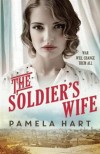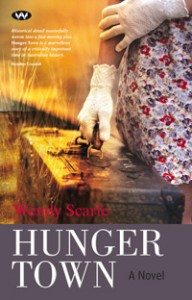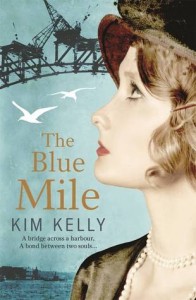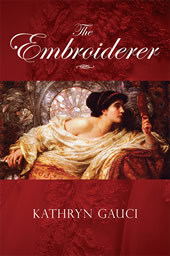Well, it’s curling up on the couch and reading weather and do we have some books for you! And new reviewers as well. At least quite a few unfamiliar to this rounduperer at the helm since the start of the year. We have 21 books reviewed by 18 different reviewers and a total of 15 different titles!
I’m kicking off the roundup with The Soldiers Wife by Pamela Hart which received the most reviews this month – five. Robin at Write or Wrong explains “The Soldier’s Wife is a historical fiction novel written by Pamela Hart set in 1915. What I loved about this book was that it did the whole, prissy city bitch moves to the country and has to adjust, in reverse.” Emily of The Incredible Rambling Elimy observes, “This was an interesting book, in that it turned out to be far more complex than I ever expected.” Sam of Sam Still Reading found “Pamela Hart’s research for The Soldier’s Wife was both detailed and interesting.” And Bree from 1 Girl 2 Many Books writes, “Reading this 100 years after it’s set, you realise just how much things have changed in terms of what women could and couldn’t do.” Jonathan of Me Fail? I Fly concludes, “It’s a good yarn. You care about the characters. And there’s the blessed relief of being able to think about Gallipoli through the experience of life-sized, complex people without the background noise of rascally patriotism.”
Four novels reviewed this month tackled the subject of the Depression in Australia. Hunger Town by Wendy Scarfe, Jennifer at Goodreads writes, “is set in Port Adelaide, and the central character is Judith Larsen who was living with her parents on a coal hulk on the Port River… While ‘Hunger Town’ is in part a love story, it’s the portrayal of the tenacity and courage of so many individuals that caught and held my attention.”
In The Blue Mile by Kim Kelly – “The week before Christmas, 1929, Eoghan O’Keenan loses his factory job, and has to flee the slums of Chippendale with his seven-year-old sister Agnes. On the north side of Sydney at Lavender Bay, Olivia Greene is working on her latest millinery creations and dreaming of becoming the next Coco Chanel.” Can’t wait to read this one. Sarah from Reading the Past observes, “All of the details on the broader social context enhance the telling of a beautiful love story.”
The Bird’s Child by Sandra Leigh Price, like The Floating Garden (highlighted last month and also reviewed this month) is set in a boarding house during the Depression. “Three people find themselves washed up on the steps of Miss Du Maurier’s bohemian boarding house in a once grand terrace in Newtown.” Emily from The Incredible Rambling Emily “raced through this novel, and loved all the characters in their own ways.” Lou from Newtown Review of Books writes, “An unusual and imaginative novel, The Bird’s Child traverses surreal territory while touching on historical facts and diverse ideologies.”
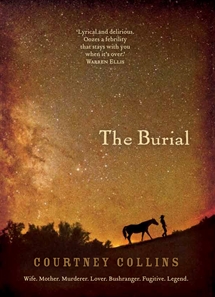
Back a few years and we have The Burial by Courtney Collins – “A breathtakingly brilliant debut novel in the tradition of Cormac McCarthy – inspired by Australia’s last bushranger, young woman Jessie Hickman.” Sheree of 26 Letters says, “It’s a beautifully written novel, but perhaps it’s a testament to the skill of its author that for the most part I didn’t notice that as I read it. The prose is evocative, but doesn’t get in the way of the story or characters.”
For something quite different there’s The Embroiderer by Kathryn Gauci. “Set against the mosques and minarets of Asia Minor and the ruins of ancient Athens, ‘The Embroiderer’ is a gripping saga of love and loss, hope and despair, and of the extraordinary courage of women in the face of adversity.” Tracey at Carpe Librum concludes “Readers who enjoy reading historical fiction based around real historical conflicts will enjoy reading The Embroiderer, and will definitely learn more about Greece (and WWI) in the process.” Another one for my enormous To Be Read pile!
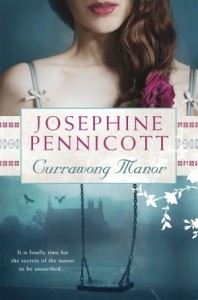 Flash forward back to the 20th Century and Josephine Pennicott’s Currawong Manor. “When photographer Elizabeth Thorrington is invited to document the history of Currawong Manor for a book, she is keen to investigate a mystery from years before: the disappearance of her grandfather, the notorious artist Rupert Partridge, and the deaths of his wife, Doris, and daughter, Shalimar.” Sarah from Reading the Past concludes, “There’s a lot of story packed into the nearly 400 pages, all perfectly paced, with secrets teased out bit by bit until the shocking denouement – which is worth staying up late to discover. Fans of Kate Morton should devour it, but Pennicott has a distinctive style all her own.”
Flash forward back to the 20th Century and Josephine Pennicott’s Currawong Manor. “When photographer Elizabeth Thorrington is invited to document the history of Currawong Manor for a book, she is keen to investigate a mystery from years before: the disappearance of her grandfather, the notorious artist Rupert Partridge, and the deaths of his wife, Doris, and daughter, Shalimar.” Sarah from Reading the Past concludes, “There’s a lot of story packed into the nearly 400 pages, all perfectly paced, with secrets teased out bit by bit until the shocking denouement – which is worth staying up late to discover. Fans of Kate Morton should devour it, but Pennicott has a distinctive style all her own.”

Covering lots of centuries is Cranky Ladies of History edited by Tansy Rayner Roberts and Tehani Wessely. “Cranky Ladies of History is a celebration of 22 women who challenged conventional wisdom about appropriate female behaviour, from the ancient world all the way through to the twentieth century.” Tsana from Reads and Reviews writes, “Overall, interesting and fascinating are the two words that best describe this collection. I would highly recommend it to anyone wanting to dip into the lives of a variety of historical women.”
Last but definitely not least is the late, great Colleen McCullough with The First Man in Rome. The first book in the Masters of Rome series of 7 books is “a masterpiece of historical fiction that is fascinating, moving, and gloriously heroic. The reader is swept into the whirlpool of pageantry, passion, splendor, chaos and earth-shattering upheaval that was ancient Rome.” Faith from Beyond the Dreamline writes “The First Man in Rome is spectacularly skillful, taking on a cast of mostly morally dubious characters and making them all immensely engaging, if not necessarily likeable – and McCullough spins together the social and political background so effectively that she rarely has to stop and explain anything in detail, allowing the plot and characters to take centre stage.”
What time will you visit in your reading next? Ancient Rome, the first half of the last century or somewhere in between?
About Me:
My name is Debbie Robson and I am a bookcrosser, booklover and author. I love researching the 20th century and finding those small but relevant details that can make the past come alive. You can find me on twitter: lakelady2282

